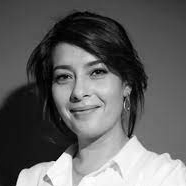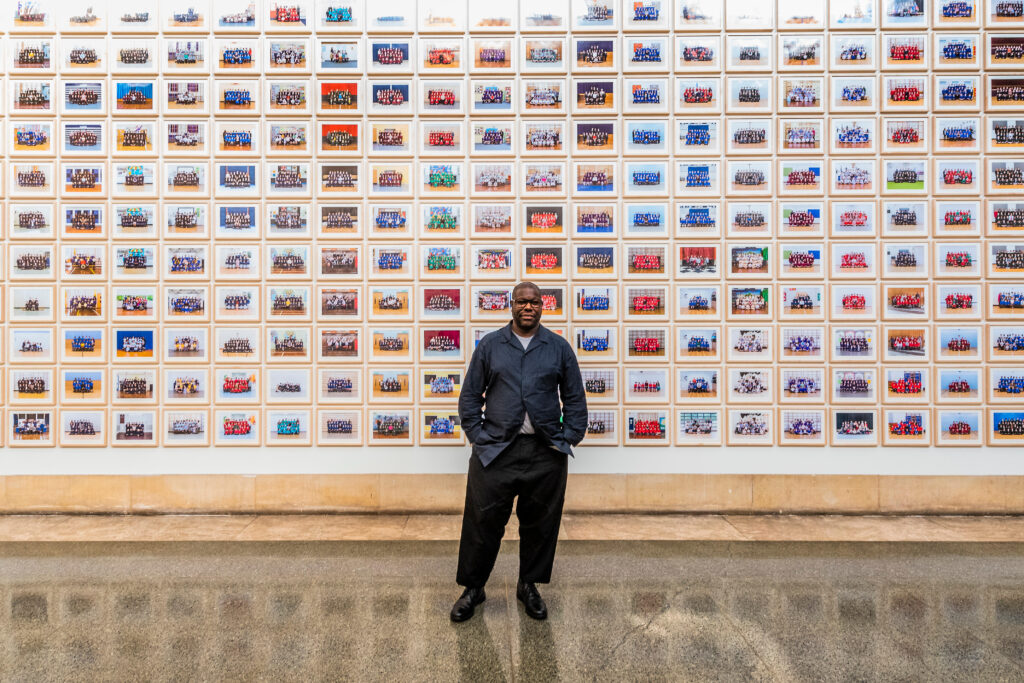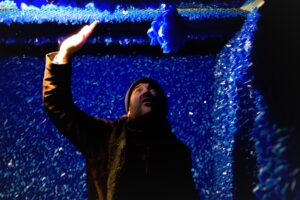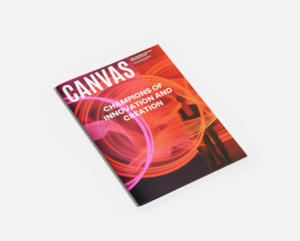

Artangel showcases extraordinary art in unexpected places, responding boldly to the environment in which we live. Mariam Zulfiqar is a well-established expert in public art, extending her leadership experience as the Director of Artangel. She takes on this role from the founder-Directors with an ambition to share public art and artistic voices for upcoming generations and new and emerging audiences. We were delighted to speak with her as she launches one of her first campaigns for Artangel focused on the climate emergency.
Please can you tell us about Artangel and its roots?
Artangel was founded over 30 years ago. For three decades James Lingwood and Michael Morris were at the helm, two incredibly well-known and respected people in the contemporary art world. Between them they embarked on a bold mission to present extraordinary ideas in unexpected places at the time when museums and galleries were not working in this way. Artangel supported artists to be ambitious, and as their ideas found form, they challenged peoples’ perception of what art could be.
This spirit of championing something really ambitious and seemingly impossible and bringing that to life is in the DNA of Artangel.
The organisation has had a real impact across the art world and for me personally. When I was studying public art at Chelsea College, I came across Artangel projects and remember thinking that it was incredible to see the existence of ideas in spaces where people don’t expect to encounter the work of artists.
“Artangel supported artists to be ambitious, and as their ideas found form, they challenged peoples’ perception of what art could be.”
You joined as Director in January 2022 – how are you realising your vision for the organisation?
For me it’s always been about what this organisation can support, and what it can bring into reality. We are in a challenging moment and Artangel can play an important role in supporting artists to navigate and make work at this time.
Since Artangel was established there have been a lot of changes; cultural and political landscapes have shifted, socio-economic circumstances that people and communities have to navigate have changed. Of course, new technologies have also emerged that bring us face-to-face with local and international issues like never before.
Prior this role I led the art programme for Forestry England where the interdisciplinary conversations between artists and scientists, foresters and researchers created new ways of thinking about the current environmental and bio-diversity crisis we face. For much of my career I have worked alongside artists’ as they address and respond to the complex realities of our present times and I have held the belief that the ideas of artists are much needed to help us confront our limitations and think beyond them.
Artangel is hugely loved and has a track record for producing artworks at scale and in-depth. My aim is to build on that foundation by bringing in more diverse ideas and voices from a wider range of artists and places. The urgency of this moment necessitates that approach.
An example of this in practice is our project Making Time, a year-long programme in partnership with Kings College London, Radar at Loughborough University and the University of Brighton, in which a selected group of artists are invited to experiment with and explore new material possibilities in light of the climate emergency.

This is your first Executive leadership role – can you share some of the learnings you have realised, including challenges and opportunities?
For this to be my first Executive role has been an exciting transition for me. It is also a transition for the organisation as the previous directors step back after 30 years.
The main challenges I am acutely aware of is that we are operating at a time when big shifts are occurring; ecologically, economically, politically and culturally. We are drifting into an increasingly polarised world where entrenched positions leave little room for dialogue. Navigating this as a leader requires sensitivity and understanding.
“We need to think about what our spaces represent; how can we animate and activate them to start conversations or encourage reflection.”
Can you tell us why public art is your passion and what it offers to those who experience it?
My perspective has very much been shaped from a very young age. I grew up in Pakistan in the 1980s, under the rule of military dictatorship and martial law, which meant curfews and restrictions everywhere. We lived with my aunts who were lawyers and political activists and opposed to the military dictatorship. I used to watch them organise rallies and protests for democracy. I didn’t realise as a child what a formative experience this was, but it gave me an acute understanding of the fact that if you want to make an impact you have to be brave and say publicly in an outside space.
Of course, public space is much more nuanced than that, but for me, as a child, beyond the front door was an important threshold that took you into the dangerous, but also the necessary, in order for change to happen. My aunts were at rallies, arrested and even put in jail quite frequently. I learned very young that for change to happen, things needed to be stated – verbally, visually, individually and collectively, in spaces where it would have impact.
We need to think about what our spaces represent; how can we animate and activate them to start conversations or encourage reflection. I believe that learning and engagement with ideas can happen anywhere and that’s why I love the public space challenge of all of this, because I think the context is so rich and there’s so much to talk about.

Is there a growing movement of support, investment and interest in public art?
It depends on where and why the work is happening. There is a growing engagement with public space and I think the pandemic amplified that. Over that period people became incredibly aware of their public spaces, appreciating local areas. It catalysed a new way of looking at what is available on your doorstep: how do we view space when it is taken away?
What goes on in public space triggers dialogue and debate. There is always a reaction – people can be for or against an intervention and a whole conversation starts. A wider public can access such work, which enables artists and organisations to engage in this dialogue with a broader audience, beyond a traditional gallery or museum visitor.
I don’t think necessarily that there are more public art champions at the moment, but I believe there is more political acuteness and more awareness of the value of public spaces.
“The work of the artists and organisations like Artangel should remain independent. There’s a recognition that what we do is different, important and necessary.”
Should there be more collaboration between public, private and commercial art organisations/institutions? Or do they work better apart?
We must consider what happens in the process when different motivations and interests meet. It’s not necessarily a bad thing, but one does need to be mindful and navigate it sensitively. That historic approach to sponsorship with logos being emblazoned across projects and spaces is less attractive, even for big corporations.
The work of the artists and organisations like Artangel should remain independent. We are a charity and of course, we need to be supported for us to exist and continue the role we play. Over the years individuals and organisations who recognise the need for organisations like ours have generously supported us. There’s a recognition that what we do is different, important and necessary.
How are public and visual arts initiatives working to engage a more diverse workforce and audience?
It’s a question that every publicly funded organisation does have to ask itself, because we are in a country where diversity exists across so many areas.
I can’t speak for the sector because each organisation will approach this in their own way, but for me, the conversation about diversity and inclusion needs to happen across the organisation and at all stages of programming. From the artists we commission, to team recruitment and the audiences who engage with our work. It should never be an after-thought. The more voices around the table having challenging conversations from the outset, the more the organisation and the programme it produces are enriched.
Biography – Mariam Zulfiqar
Mariam Zulfiqar is the Director of Artangel. Prior to joining the team in January 2022, Mariam led the National Art Programme at Forestry England where she implemented a new strategic direction, developing partnership projects at the intersection of art, design, architecture, environment, and ecology.
As Deputy Director and Chief Curator at UP Projects, Mariam curated new commissions and oversaw Constellations – an artist development programme for artists working in the public domain, and This is Public Space – a programme of digital commissions that explore the internet as a site for art. Mariam’s primary area of focus is art in the public domain and as an independent curator, she has commissioned projects for Film and Video Umbrella and Art on the Underground. In 2021, Mariam curated Bring into Being – the inaugural programme of events, activities and contemporary art at Chiswick House. The programme marked a new chapter by inviting contemporary voices in the arts and sciences to respond to the historic 18th Century site.
Mariam regularly consults for various international public art programmes and has guest lectured at academic institutions in the UK and internationally. In 2013 she was the recipient of the Queen Elizabeth Diamond Jubilee Scholarship Fund. Mariam holds a BA in Design and Public Art from Chelsea College of Art and an MA in Curating Contemporary Art from the Royal College of Art.
